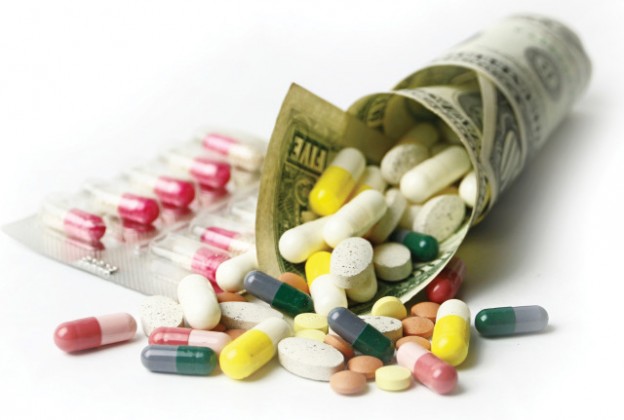Drug Prices Got You Down? Pharma Couldn’t Care Less.
Source: Philadelphia Inquirer, April 12, 2016Source link
One way of defining a “rogue” industry is to see which ones have declared war on their customers. By that measure, pharma stands at or near the top of combining the elements that go into making a rogue: contempt for the public and the unmitigated pursuit of greed.
In the midst of the 2016 presidential campaign, unaffordable drug prices are again among the handful of top issues that all candidates must address. By quick reckoning, this marks the seventh presidential campaign cycle where that situation applies. At the same time Congress is also holding hearings on rising drug prices and several members petitioned the Secretary of Health & Human Services to assert “march in” rights (i.e., suspend patents) on the most egregiously priced brands. The leading Democratic candidate, Hillary Clinton, wears the albatross around her neck of receiving more contributions from pharma than any other candidate.
As the recipient of all this political and media heat, one might think pharma would lie low and suppress its price gouging until after the November election, thereby allowing the amnesiac American public to refocus its attention onto some celebrity transgression or cute animal video.
But pharma doesn’t see the need for even a temporary respite. This week a Reuters analysis revealed that in the five years since 2011, prices on the nation’s 10 top-selling drug products increased between 50 and 126 percent.
Reuters’ Caroline Humer wrote that compared to the outrageous 5,000 percent drug price hikes engineered by outlier executives such as Martin Shkreli, “Routine price increases by bigger players may draw less attention, but they add up.” Using figures from the pharma data supplier IMS, she found that sales revenues for the 10 best-selling drugs went up 44 percent between 2011 and 2014, even while prescriptions for those medications declined 22 percent during that time.
The drug industry’s spokesmen respond that these increases reflect published prices and do not take into account rebates and other discounts. Yet pharmacy benefit managers told Reuters that even after rebates, they have been forced to pay 10 percent annual price increases on these top-selling medications during a period when the U.S. consumer price index rose by a yearly average of 2 percent.
Pharma not only brazenly increases its prices during a period of intense media and political scrutiny, but it also refuses to recognize the objective reality that drugs are increasingly unaffordable. The industry instead prefers to define the situation as one of public misperception that pharma must address with a proactive PR campaign.
Last month The Hill reported that Steve Ubl, the new president of PhRMA, pharma’s trade group, plans to add “top scientists and researchers” to its stable of professional lobbyists and to hire “patients who have benefited from some of the newest, and most costly drugs” to meet with lawmakers.
Ubl acknowledged that the trade group would abandon its largely defensive approach in favor of developing a proactive policy agenda and driving its adoption. Ubl told The Hill, “going on offense” refers to defeating federal policy changes that would “limit price increases.”
Medication costs now account for 16.7% of all health care spending and nearly 20 percent of every dollar that employers spend on health insurance benefits. The recent pace of drug cost growth makes it the fastest growing component of health care spending. The reality of growing drug unaffordability was seen two years ago in a Commonwealth Fund report that showed one in five U.S. adults could not fill their prescriptions or skipped doses because of the costs, twice the proportion of patients in Germany, Canada and Australia that are impeded from their medications by cost.
Yet pharma ignores this stark reality and the plight of its American customers by continuing to raise its prices at an intolerable rate. At the same time its response to complaints by the public and their elected officials consists of an aggressive PR campaign to hoodwink the public and seduce politicians. Not only does the industry rebuff all efforts to moderate its prices, but it also opposes calls for more transparency on the product development spending with which it justifies those prices.
If pharma isn’t an out of control, rogue industry, then the term lacks all meaning.

